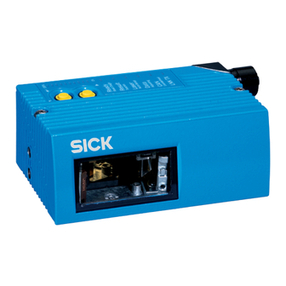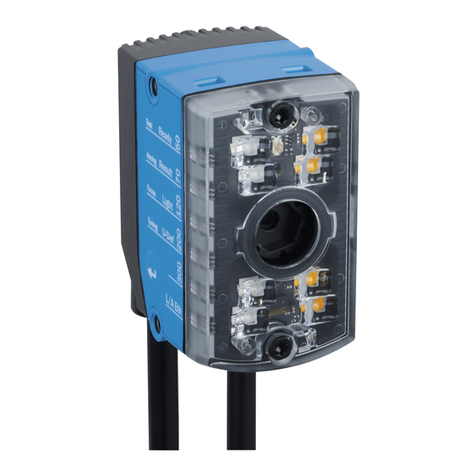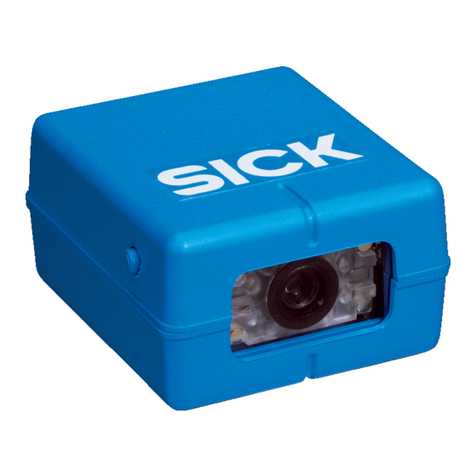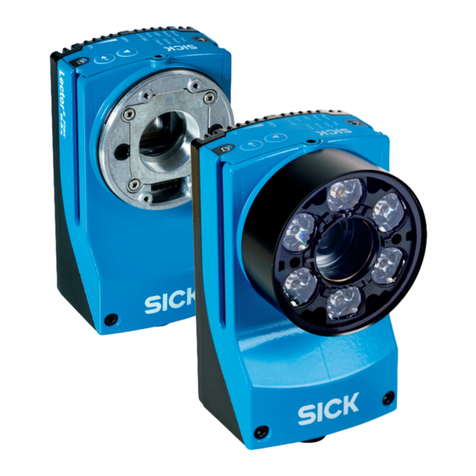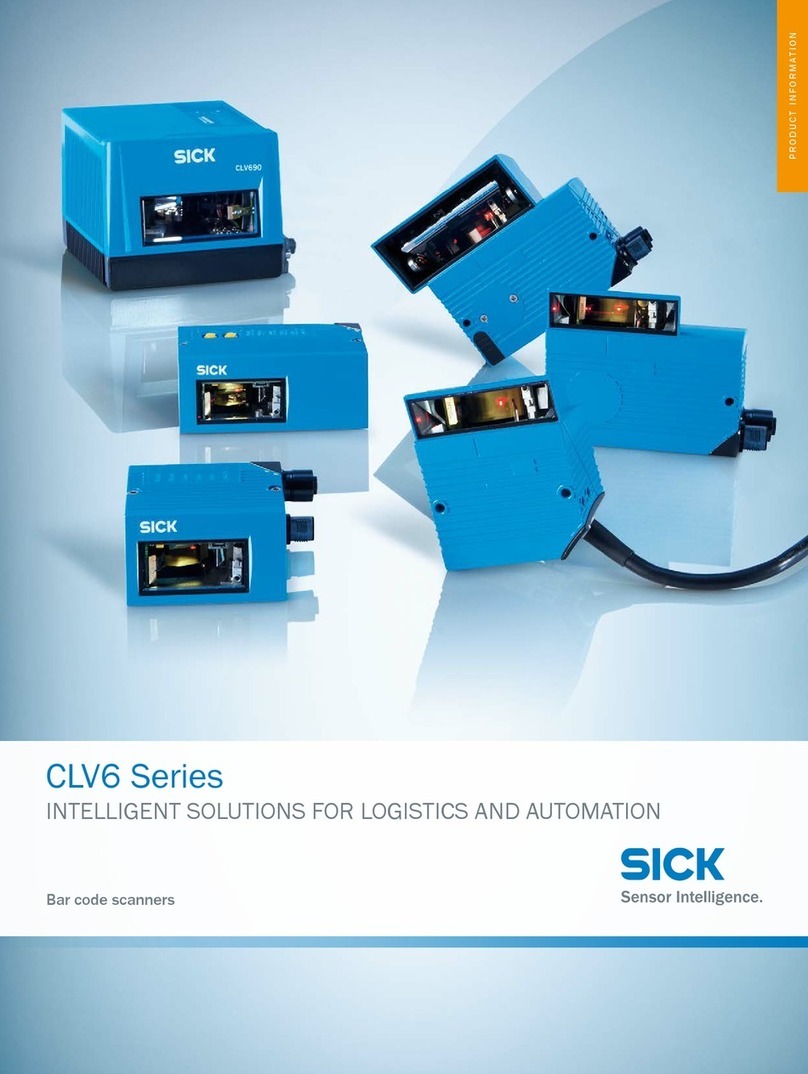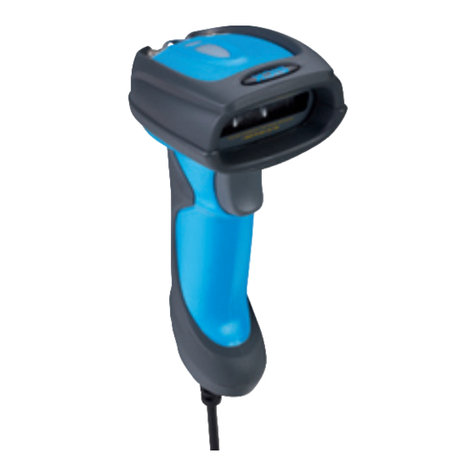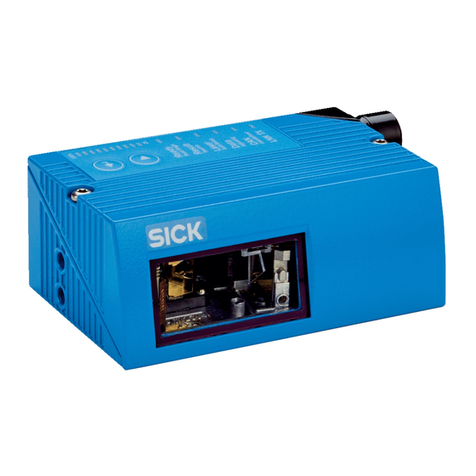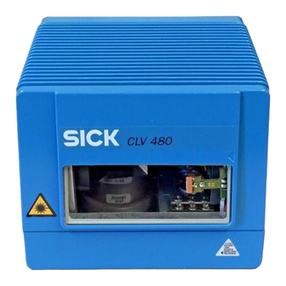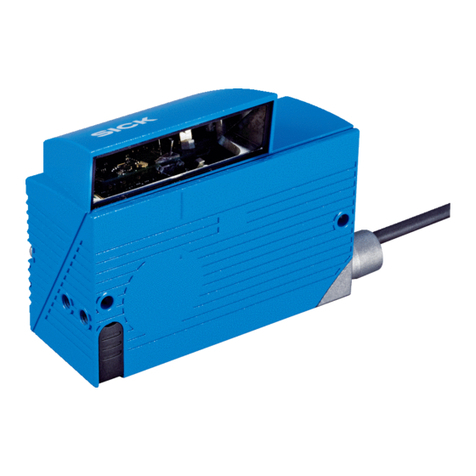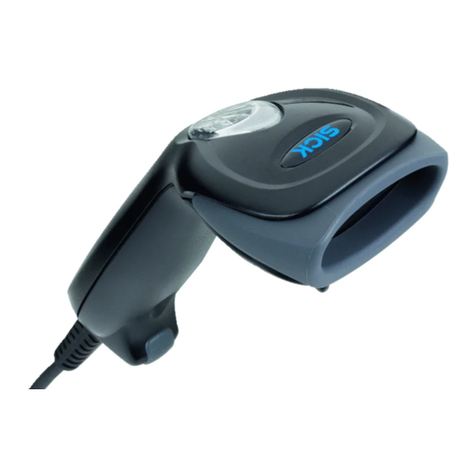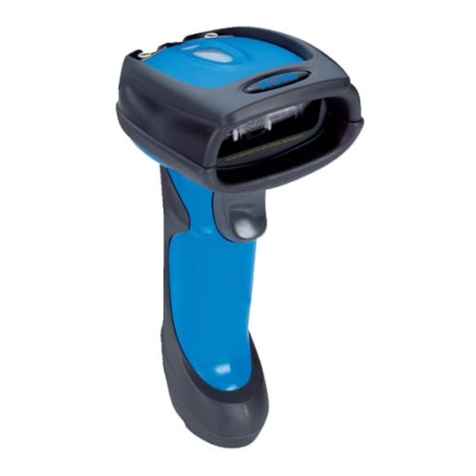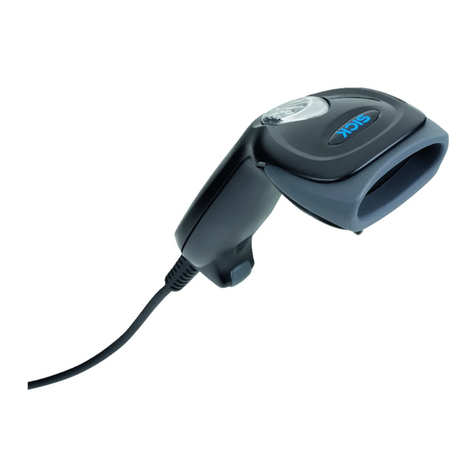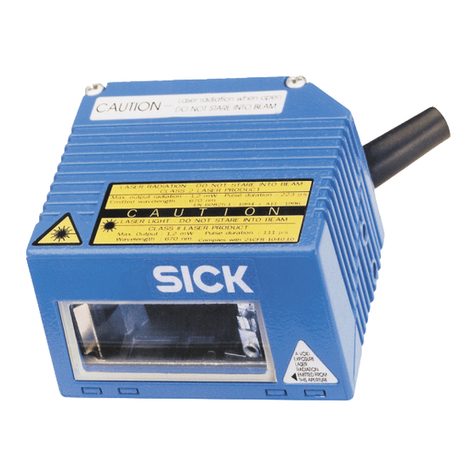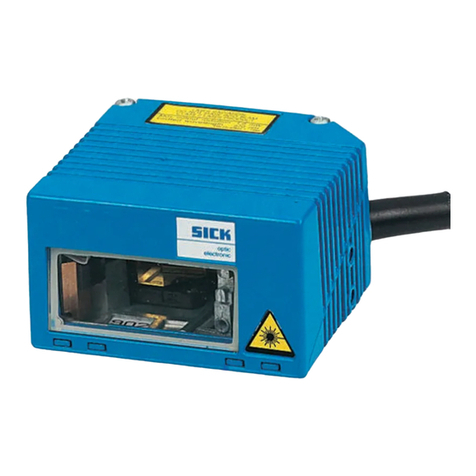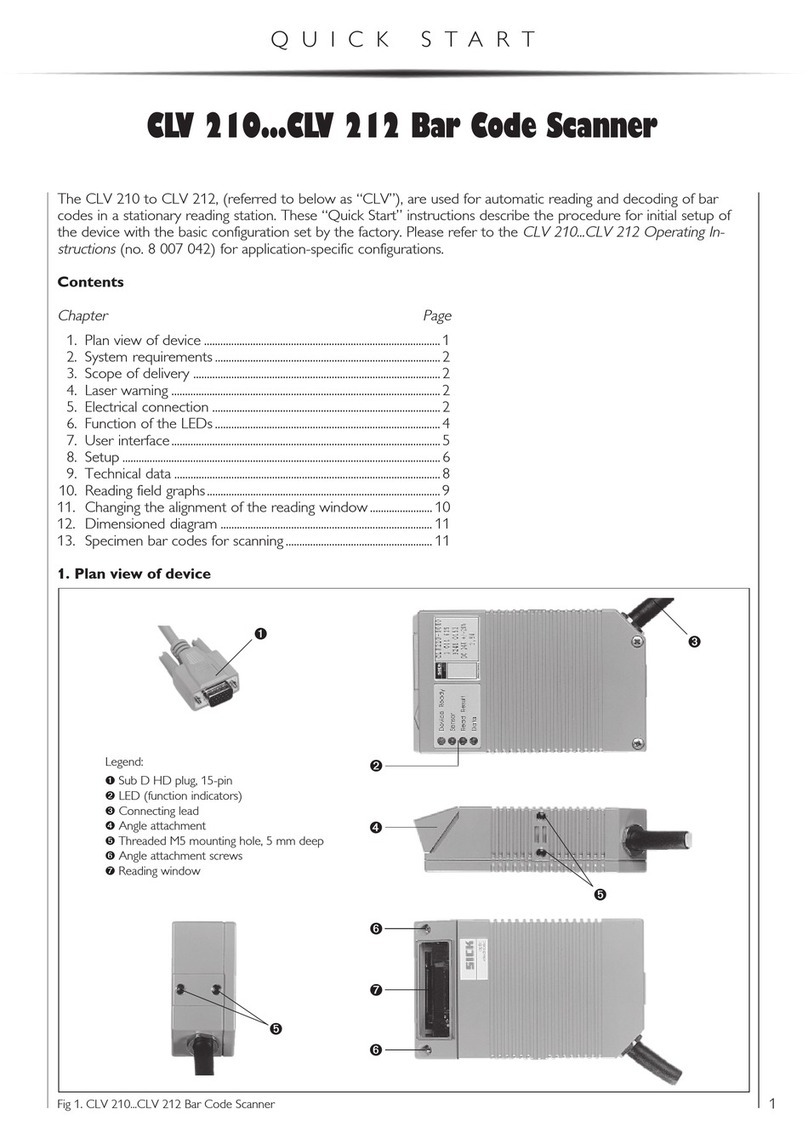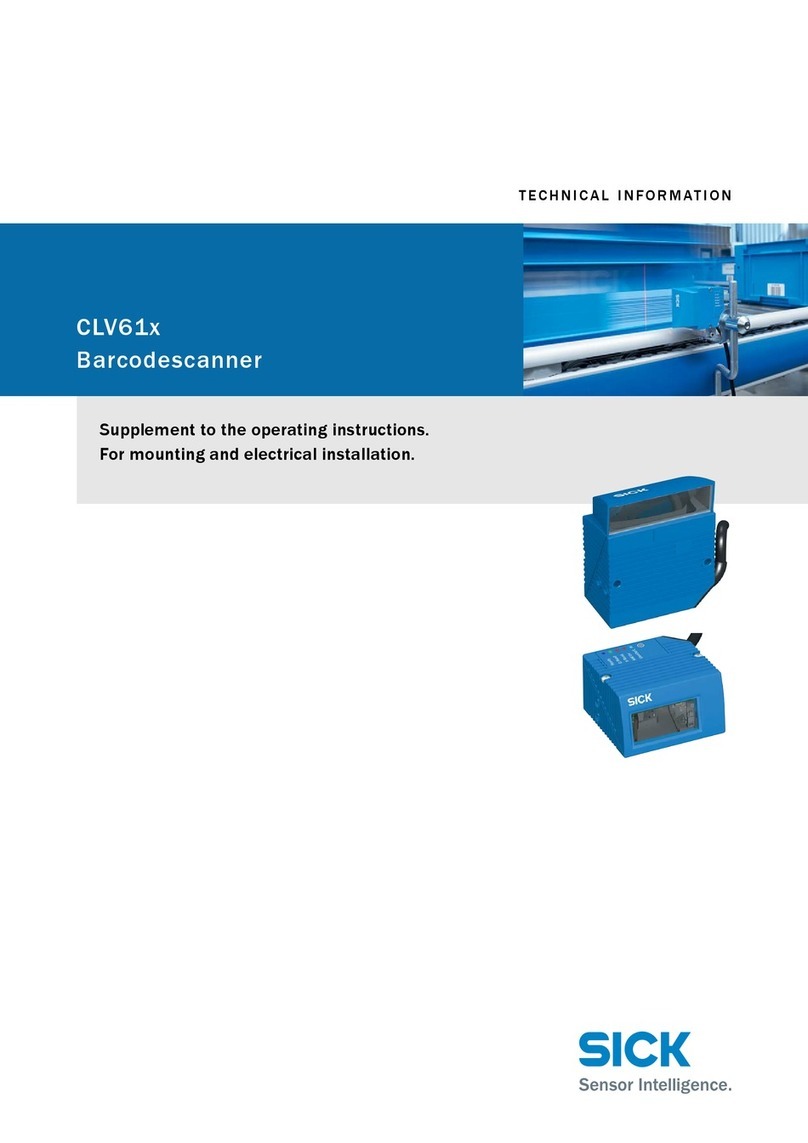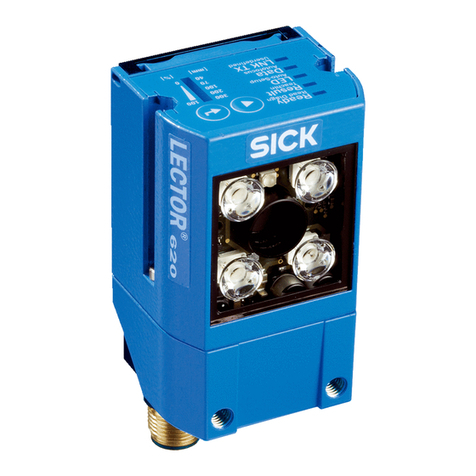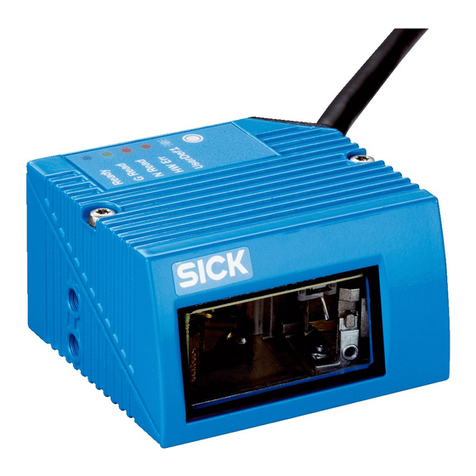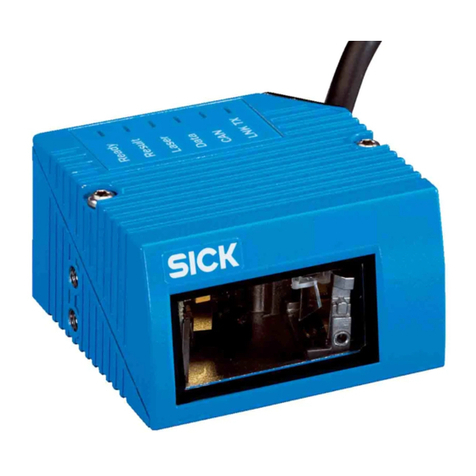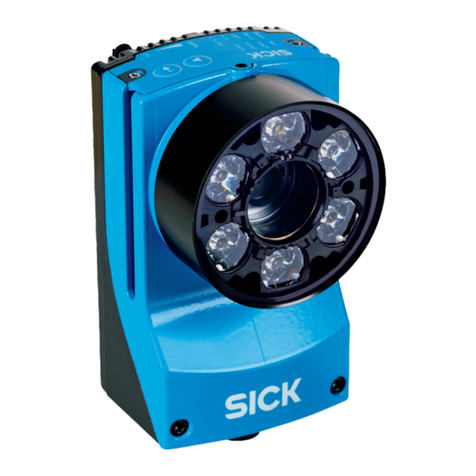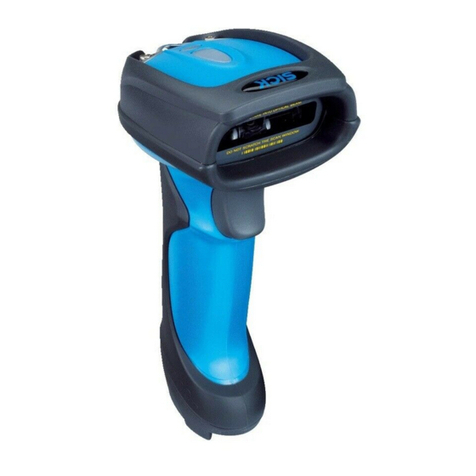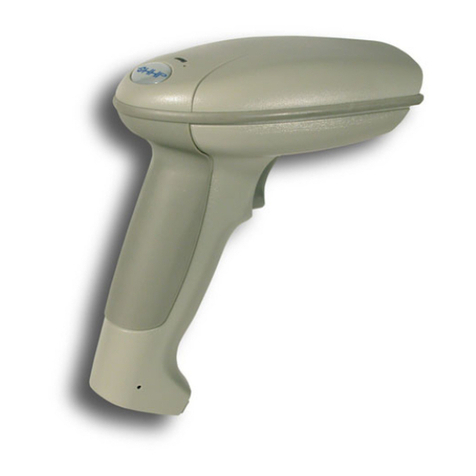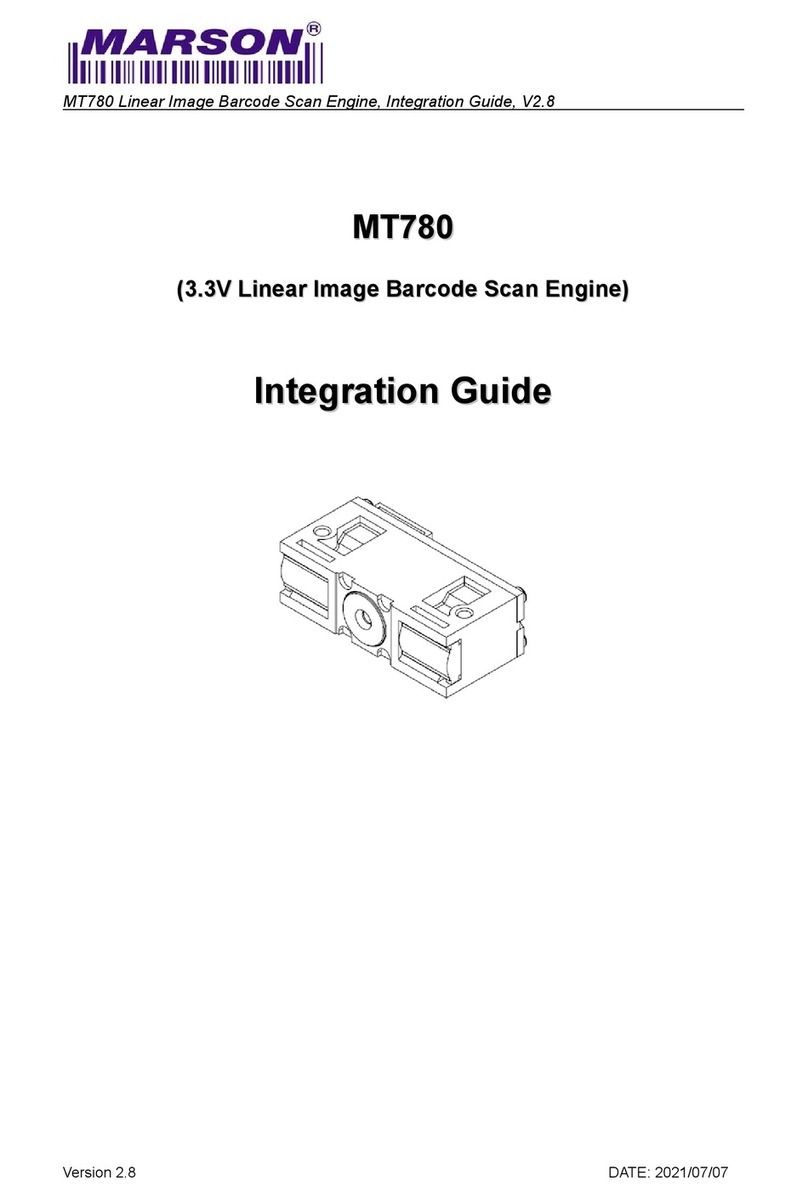
Operating Instructions
CLV 45x Bar Code Scanner
Contents
8 009 139/K949/06-06-2002 © SICK AG · Division Auto Ident · German · All rights reserved E-5
Table of contents
1 Notes on this document .............................................................................................. 1-1
1.1 Function.......................................................................................................................................... 1-1
1.2 Target audience .......................................................................................................................... 1-1
1.2.1 Installation, electrical installation, maintenance, device replacement............ 1-1
1.2.2 Startup, operation and configuration .......................................................................... 1-1
1.3 Information content ................................................................................................................... 1-1
1.4 S mbols used .............................................................................................................................. 1-2
2 Safety information ......................................................................................................... 2-1
2.1 Authorized users ......................................................................................................................... 2-1
2.1.1 Installation and maintenance......................................................................................... 2-1
2.1.2 Electrical installation and replacing devices............................................................. 2-1
2.1.3 Startup, operation and configuration .......................................................................... 2-1
2.2 Intended use ................................................................................................................................ 2-1
2.3 General safet instructions and protective measures ................................................. 2-1
2.4 Quick Stop and Quick Restart................................................................................................ 2-3
2.4.1 Switching off the CLV ........................................................................................................ 2-3
2.4.2 Switching on the CLV again ............................................................................................ 2-3
2.5 Environmental information ...................................................................................................... 2-4
2.5.1 Power requirement ............................................................................................................ 2-4
2.5.2 Disposal after final removal from service.................................................................. 2-4
3 Product description....................................................................................................... 3-1
3.1 Design............................................................................................................................................. 3-1
3.1.1 Scope of deliver ................................................................................................................ 3-1
3.1.2 Device variants.................................................................................................................... 3-1
3.1.3 S stem requirements ....................................................................................................... 3-1
3.1.4 Design line scanner ........................................................................................................... 3-3
3.1.5 Design line scanner with oscillating mirror................................................................ 3-4
3.2 Working method of the device .............................................................................................. 3-5
3.2.1 Changeable focal position............................................................................................... 3-6
3.2.2 Variants of the scanning process................................................................................. 3-6
3.3 Displa and operating elements........................................................................................... 3-7
3.3.1 Operating elements ........................................................................................................... 3-7
3.3.2 Function of the LEDs......................................................................................................... 3-7
3.3.3 Function of the beeper (buzzer) ................................................................................... 3-9
Installation ....................................................................................................................... -1
4.1 Overview of the installation steps ........................................................................................ 4-1
4.2 Preparations for installation.................................................................................................... 4-1
4.2.1 La ing out the components to be installed read ................................................. 4-1
4.2.2 La ing out the accessories read ................................................................................ 4-1
4.2.3 La ing out the required tools read ............................................................................. 4-1
4.2.4 Replacing the laser warning label................................................................................. 4-2
4.2.5 Selecting the installation site ......................................................................................... 4-2
4.2.6 Mounting accessories.......................................................................................................4-3
4.2.7 Distance between the CLV and the bar code ......................................................... 4-4
4.2.8 Counting direction of the code position CP and of the code angle CW ........ 4-6
4.3 Installation and adjustment of the device......................................................................... 4-8
4.3.1 Installing the CLV ................................................................................................................ 4-8
4.3.2 Adjusting the CLV................................................................................................................ 4-8
4.3.3 Auxiliar functions for adjusting...................................................................................4-10
4.4 Installing the external components....................................................................................4-11
4.4.1 Installing the AMV/S 40 connection module .........................................................4-11
4.4.2 Installing an external reading-pulse sensor............................................................4-12
4.4.3 Mounting the sensor for detecting the object distance ....................................4-13
4.5 Disassembling the device .....................................................................................................4-14
